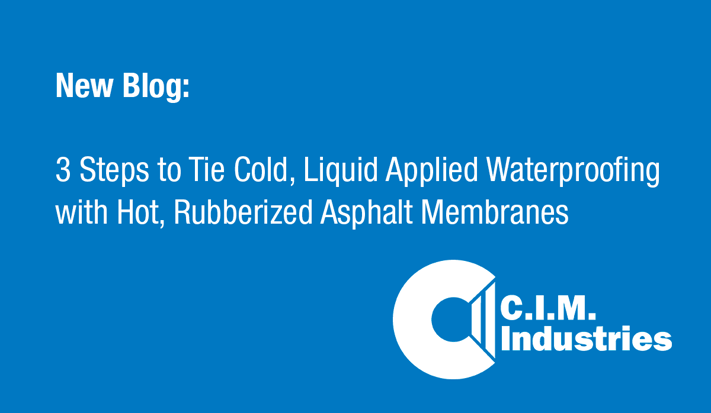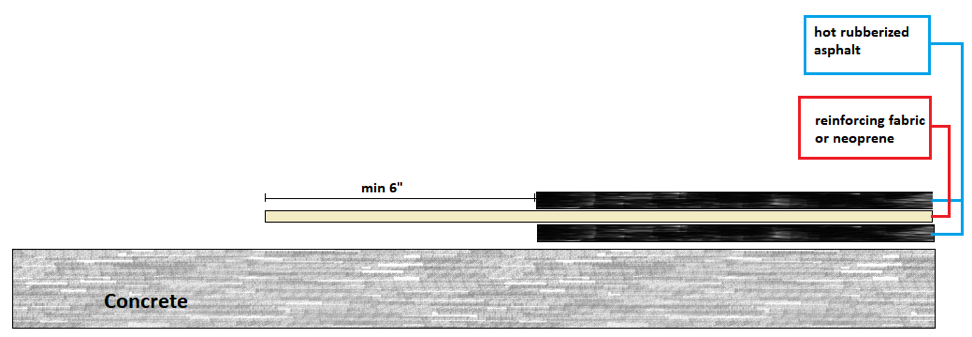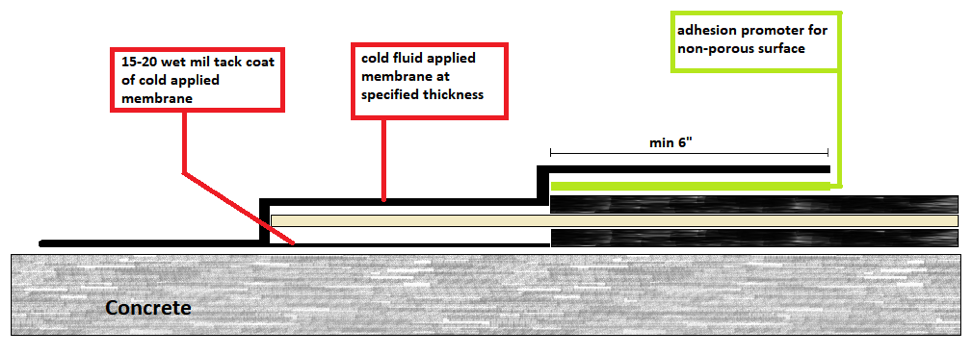 The most common method employed to tie into an existing hot rubberized asphalt system is to use more hot applied asphalt. This involves using hot kettles and can present some jobsite challenges, such as mobilization issues, safety concerns and foul odor. Cold-applied membranes can address all these concerns. Consult the manufacturer of the cold liquid-applied membrane to verify approval of application procedures. Manufacturers may be able to offer case histories, detail drawings, and application guidelines to help provide technical support needed for tie-in methodology.
The most common method employed to tie into an existing hot rubberized asphalt system is to use more hot applied asphalt. This involves using hot kettles and can present some jobsite challenges, such as mobilization issues, safety concerns and foul odor. Cold-applied membranes can address all these concerns. Consult the manufacturer of the cold liquid-applied membrane to verify approval of application procedures. Manufacturers may be able to offer case histories, detail drawings, and application guidelines to help provide technical support needed for tie-in methodology.
Most methods, however, will include the steps listed below.
Step 1. Termination setups for hot rubberized asphalt
Generally, hot applied asphalt consists of two applied coats with a reinforcing fabric or neoprene sheet embedded between the two layers. To begin the tie-in process, reinforcement material must extend at least 6 inches beyond the leading edge of the waterproofing system (See Figure A). On new construction, this can be relatively easy to accomplish during the application. On rehabilitation or renovation work, the hot applied asphalt material will likely need to be reworked and include or “embed” a new reinforcement to accomplish this step.

Figure A. Hot rubberized asphalt termination
Step 2. Surface preparation for cold liquid-applied membranes
As with most coating applications, surface preparation of the substrate is the most important step for the best long-term performance. All surfaces where the cold liquid-applied membrane is applied must be properly prepared. This includes the area beneath the exposed reinforcement material as well as the area on existing applied hot rubberized asphalt surfaces (see Figure B). Requirements for surface preparation can typically be found in manufacturer’s application guides and specifications. Surface preparation for non-typical substrates, such hot rubberized asphalt, will likely require direct communication with the manufacturer. Generally speaking, the objective is to create a clean, dry, and sufficiently rough surface to maximize adhesion of the cold-applied coating.

Figure B. Surfaces that need to be prepared
Step 3. Cold fluid-applied membrane tie-ins
A 15-20 wet mil tack coat is applied to the surfaces beneath the exposed reinforcement material. While the tack coat is fluid, wet-set the reinforcement material evenly, avoiding air pockets, wrinkles, etc. The cold fluid membrane is then applied onto the prepared hot rubber, on top of the reinforcement material and over the remaining substrate to be coated. (See Figure C). Manufacturers may recommend an adhesion promoter for applying cold liquid membranes to existing membranes and/or primers on the concrete surfaces.
 Figure C. Application of the tack coat and cold fluid membrane
Figure C. Application of the tack coat and cold fluid membrane
Upon completion of the cold liquid-applied method, manufacturers may recommend drainage protection or a protection board over the entire waterproofing membrane.
Tie-in areas between different types of waterproofing systems should be designed utilizing a robust, redundant system to ensure water tightness. Methods listed above have been successfully used in hundreds of applications of bridging together different systems when safety, cost, and product performance factors are required. If you would like more information, please feel free to contact us or visit our website at www.cimind.com.




